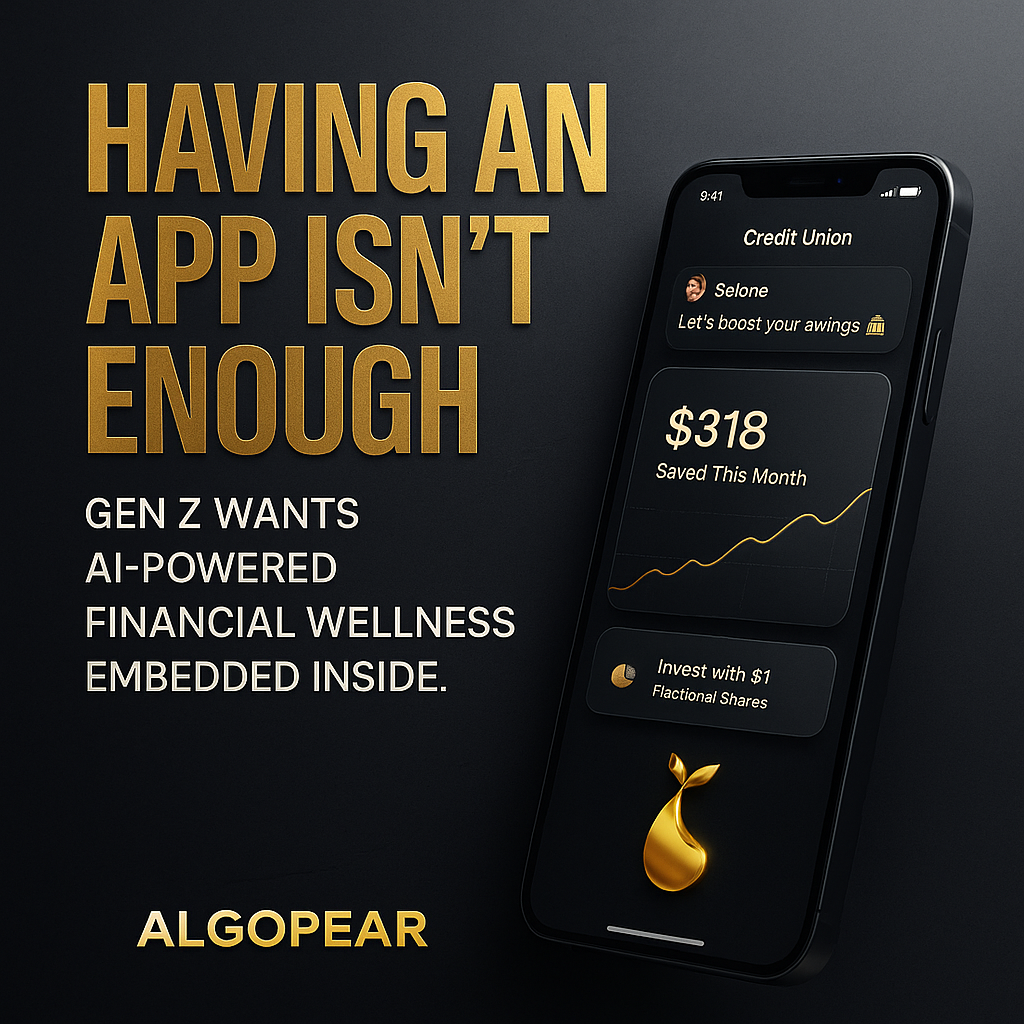

By Ben Malena Co-Founder AlgoPear
Credit unions often celebrate total membership numbers as a sign of growth. But hidden beneath those totals is a dangerous blind spot: dormant accounts. These are members who signed up, opened an account, maybe made one or two transactions — and then disappeared.
They haven’t closed their account. They haven’t transferred their loyalty. They’ve simply gone silent. And that silence is bleeding credit unions dry.
A dormant member isn’t neutral. They’re a missed opportunity for deposits, referrals, investment, and long-term trust. It’s estimated that between 20% to 40% of credit union members are functionally inactive digitally. They don’t log in. They don’t explore. They don’t engage.
Meanwhile, their financial lives continue — just not with you. They're using Zelle and Venmo to send money, Current and Dave to automate deposits, Public and Stash to invest, and getting financial guidance from influencers on YouTube Shorts and Instagram Reels — platforms that deliver rapid, digestible financial advice tailored to their lifestyle.
That’s the hidden crisis: members aren’t gone — they’ve simply outgrown you. And the cumulative cost? Over $70 billion in lost engagement value across the industry each year.

When a member stops engaging, they stop growing — and so does your revenue.
The loss isn’t theoretical. It’s deeply measurable:
These aren’t estimates pulled from the sky — these are modeled across behavioral benchmarks observed in leading financial service institutions. Dormancy doesn’t just slow down growth. It erodes it.
Worse yet? Members are waking up — just not with you. Gen Z and Millennials are actively building financial habits, but they’re doing it inside platforms that reward interaction, teach in real-time, and integrate with their digital lifestyle.
Credit unions aren’t behind in values — they’re behind in design.
The problem didn’t start overnight. But it accelerated fast.
Over the last 10 years, fintechs and neobanks have flipped the script. Instead of asking members to adapt to banking norms, they adapted to the behaviors of members. Their interfaces look like social platforms. Their messaging feels human. Their value props feel personal.
Meanwhile, many credit unions still rely on static interfaces, generic email campaigns, and siloed financial tools that feel outdated to a generation raised on frictionless tech.
It got this bad because the industry mistook “digital presence” for “digital relevance.”
The average Gen Z member doesn’t want to dig through PDFs or call a branch to make sense of their finances. They want contextual insights. They want progress tracking. They want to feel like their credit union sees them — and gets them.
Fintechs aren’t just winning with technology. They’re winning with culture fluency, real-time engagement loops, and relentless iteration around user behavior.
If your platform doesn’t evolve with the culture, you don’t just lose young members — you lose the future.
Let’s challenge the metrics. Many credit unions rely on app downloads, web traffic, or login frequency as signs of health. But logins are not loyalty. And app installs do not equal impact.
A member logging in to check their balance is not the same as a member who’s actively improving their financial health, setting goals, learning from personalized content, or investing with confidence. One is passive observation. The other is behavioral transformation.
Passive usage is not progress — it’s camouflage.
Internal dashboards may show rising traffic, but the deeper question is: what are members actually doing once they’re inside your ecosystem?
Most often, the answer is no.
This false sense of success has created complacency. It convinces leadership that things are “fine” — while silent churn grows in the background. It makes strategic innovation look optional, when in fact, it’s overdue.
The platforms that win today are measuring meaningful interaction: the number of personalized nudges delivered, goals set, milestones achieved, questions answered, and member habits changed. That’s the true north of engagement. And it starts with intelligent systems built for connection, not just convenience.
Selene AI isn’t just another fintech tool. She’s a credit union’s frontline defense against irrelevance.
Built by AlgoPear to bridge the gap between attention and action, Selene is an embedded financial wellness assistant that transforms idle platforms into daily engagement engines. She meets members where they are — with empathy, intelligence, and tailored guidance.
Selene doesn’t just fix dormancy. She prevents it.
And for credit union executives tired of watching members drift to every other app on their phone — this is how you reclaim the center of their financial lives.
The Bottom Line: Solve Engagement, Recover Billions
Credit unions are sitting on a goldmine of inactive potential. But engagement doesn’t happen by accident — it happens by design.
Selene AI was built for this moment. The moment where financial education meets behavior design, and where member wellness becomes your core growth strategy.
The $70 billion gap won’t close itself. But the institutions that act now will be the ones that shape the next decade of loyalty.
Let’s close it. Together.
— The AlgoPear Team www.algopear.com | Schedule your executive demo today